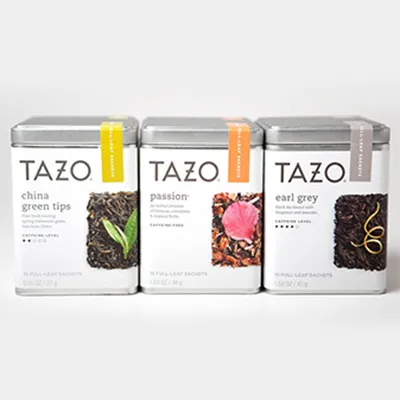
-
 Afrikaans
Afrikaans -
 Albanian
Albanian -
 Amharic
Amharic -
 Arabic
Arabic -
 Armenian
Armenian -
 Azerbaijani
Azerbaijani -
 Basque
Basque -
 Belarusian
Belarusian -
 Bengali
Bengali -
 Bosnian
Bosnian -
 Bulgarian
Bulgarian -
 Catalan
Catalan -
 Cebuano
Cebuano -
 Corsican
Corsican -
 Croatian
Croatian -
 Czech
Czech -
 Danish
Danish -
 Dutch
Dutch -
 English
English -
 Esperanto
Esperanto -
 Estonian
Estonian -
 Finnish
Finnish -
 French
French -
 Frisian
Frisian -
 Galician
Galician -
 Georgian
Georgian -
 German
German -
 Greek
Greek -
 Gujarati
Gujarati -
 Haitian Creole
Haitian Creole -
 hausa
hausa -
 hawaiian
hawaiian -
 Hebrew
Hebrew -
 Hindi
Hindi -
 Miao
Miao -
 Hungarian
Hungarian -
 Icelandic
Icelandic -
 igbo
igbo -
 Indonesian
Indonesian -
 irish
irish -
 Italian
Italian -
 Japanese
Japanese -
 Javanese
Javanese -
 Kannada
Kannada -
 kazakh
kazakh -
 Khmer
Khmer -
 Rwandese
Rwandese -
 Korean
Korean -
 Kurdish
Kurdish -
 Kyrgyz
Kyrgyz -
 Lao
Lao -
 Latin
Latin -
 Latvian
Latvian -
 Lithuanian
Lithuanian -
 Luxembourgish
Luxembourgish -
 Macedonian
Macedonian -
 Malgashi
Malgashi -
 Malay
Malay -
 Malayalam
Malayalam -
 Maltese
Maltese -
 Maori
Maori -
 Marathi
Marathi -
 Mongolian
Mongolian -
 Myanmar
Myanmar -
 Nepali
Nepali -
 Norwegian
Norwegian -
 Norwegian
Norwegian -
 Occitan
Occitan -
 Pashto
Pashto -
 Persian
Persian -
 Polish
Polish -
 Portuguese
Portuguese -
 Punjabi
Punjabi -
 Romanian
Romanian -
 Russian
Russian -
 Samoan
Samoan -
 Scottish Gaelic
Scottish Gaelic -
 Serbian
Serbian -
 Sesotho
Sesotho -
 Shona
Shona -
 Sindhi
Sindhi -
 Sinhala
Sinhala -
 Slovak
Slovak -
 Slovenian
Slovenian -
 Somali
Somali -
 Spanish
Spanish -
 Sundanese
Sundanese -
 Swahili
Swahili -
 Swedish
Swedish -
 Tagalog
Tagalog -
 Tajik
Tajik -
 Tamil
Tamil -
 Tatar
Tatar -
 Telugu
Telugu -
 Thai
Thai -
 Turkish
Turkish -
 Turkmen
Turkmen -
 Ukrainian
Ukrainian -
 Urdu
Urdu -
 Uighur
Uighur -
 Uzbek
Uzbek -
 Vietnamese
Vietnamese -
 Welsh
Welsh -
 Bantu
Bantu -
 Yiddish
Yiddish -
 Yoruba
Yoruba -
 Zulu
Zulu
High-Quality Stoppered Reagent Bottles for Safe Storage
Exploring Stoppered Reagent Bottles A Vital Tool in Science and Industry
In the realms of chemistry, biology, and various scientific research fields, precision and safety are paramount. Among the essential tools that ensure both aspects are stoppered reagent bottles. These specially designed containers are indispensable for storing and handling a wide range of chemicals and reagents used in laboratory settings.
Stoppered reagent bottles are typically constructed from glass or high-quality plastics, specifically chosen for their ability to resist chemical reactions and maintain the integrity of the contents. Glass bottles are favored for their impermeability and inert nature, which prevents contamination from external factors. Plastic bottles, on the other hand, provide lightweight alternatives that are often less prone to breakage, making them ideal for daily laboratory use.
The primary feature that distinguishes stoppered reagent bottles from regular containers is their airtight seal. The stopper, usually made of cork, rubber, or polymer, forms a tight barrier that protects the contents from moisture, air, and other environmental elements. This is especially crucial for reagents sensitive to humidity or oxidation, which can significantly alter their properties and effectiveness.
stoppered reagent bottles

In practice, stoppered reagent bottles serve myriad functions. They are used to store solvents, acids, bases, and other reactive substances. Moreover, in educational settings, these bottles are commonly observed during chemistry experiments, where students learn about the properties and reactions of different chemicals. The reliable sealing of these bottles also mitigates the risk of spills or exposure, thereby enhancing safety in the laboratory.
Furthermore, the labeling of stoppered reagent bottles is a crucial aspect that cannot be overlooked. Proper labeling with details such as the chemical name, concentration, hazards, and date of preparation helps in the organization and identification of reagents. This practice not only helps maintain an efficient workflow but also ensures compliance with safety regulations.
Another important consideration is the compatibility of materials used in both the bottle and the stopper with the contents. For instance, certain chemicals can react adversely with specific types of plastics or rubber. Therefore, choosing the appropriate reagent bottle for the substance being stored is essential to avoid degradation and ensure longevity.
In conclusion, stoppered reagent bottles are vital components in the toolkit of scientists and researchers. Their ability to maintain the stability and purity of chemical substances while ensuring safety and ease of use underscores their importance in various applications. As scientific inquiry continues to evolve, so too will the innovations surrounding storage solutions, with stoppered reagent bottles poised to remain at the forefront of laboratory practices.
-
Premium Metal Dropper Bottle for Precise Dispensing 250ml & 1ml Options AvailableNewsJul.04,2025
-
20 ml Headspace Vials - High Quality Polyethylene & Plastic Vials for Lab UseNewsJul.04,2025
-
Small Bottle with Pipette - Precise Dispensing 100ml Pipette Bottles for Essential Oils & Lab UseNewsJun.24,2025
-
Acetic Anhydride Bottle for Accurate Dropper Measurement in Pharmacy Use High-Quality Dropper BottlesNewsJun.10,2025
-
Innovative PET Bottle Design for Juice – Unique Shapes & Customization OptionsNewsJun.10,2025
-
20 Pack Sterilized Petri Dishes – Assorted Sizes, High Quality Small Plastic Petri Dishes for Lab UseNewsJun.10,2025






















